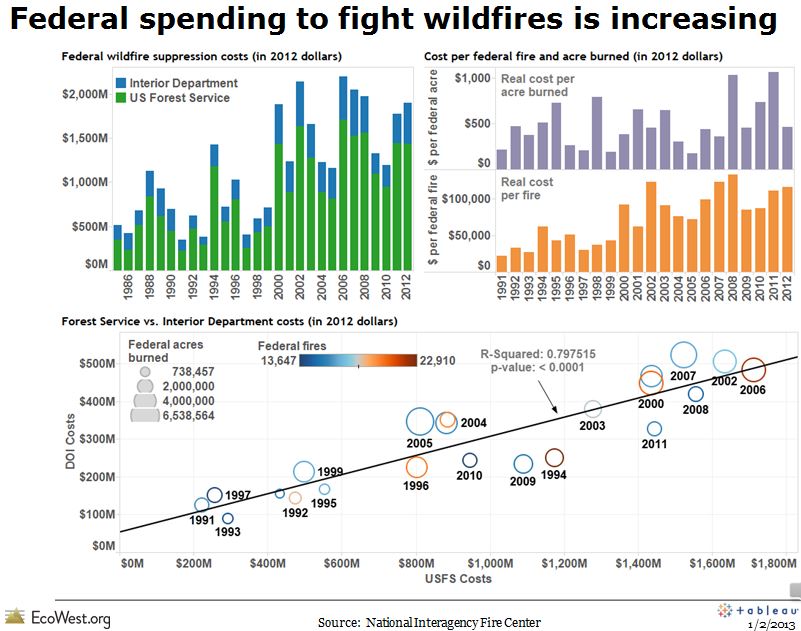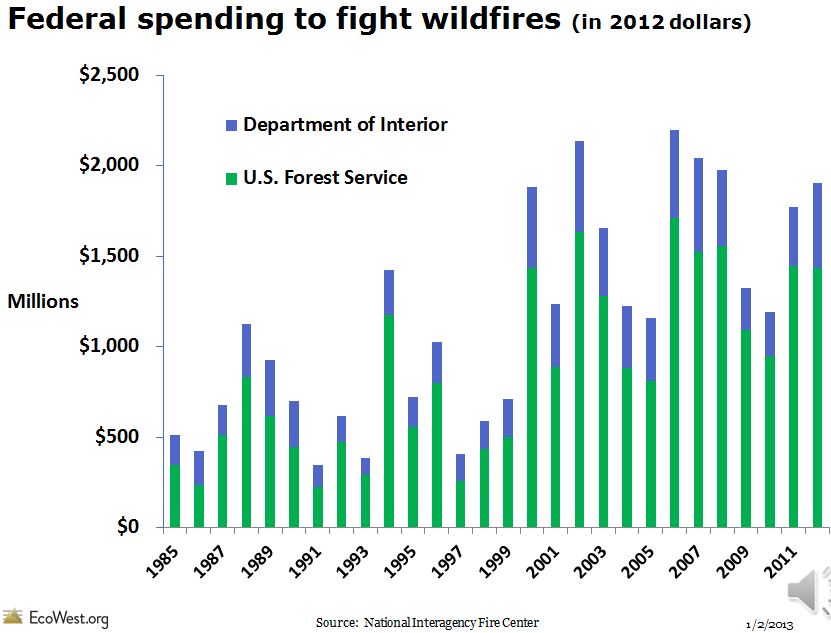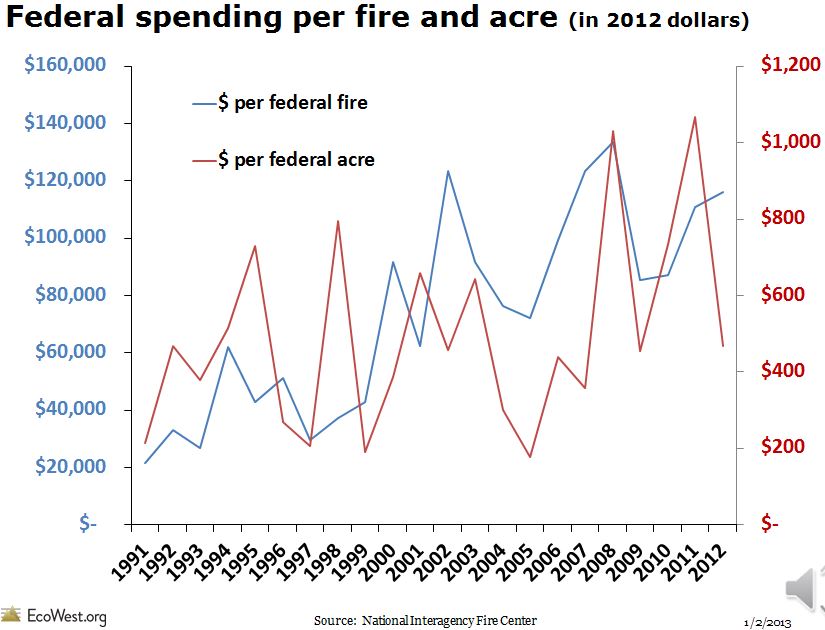CAL FIRE has released their Situation Report for the week.
Month: October 2013
California: Deluz Fire, Camp Pendleton
The Deluz Fire started near the Naval Hospital on Camp Pendleton southwest of Fallbrook, California Friday afternoon. By Sunday night the spread had stopped after burning about 2,500 acres and it was reported to be 20 percent contained. Some residents of the O’Neill Heights Housing area were evacuated Saturday but were allowed to return Sunday afternoon. Southern California Interagency Team 1 assumed command of the fire at 2:00 p.m. Sunday.
NBC News has a very interesting time-lapse video of images from the Red Mountain web cam showing the fire from the moment it started.
The video below from CNN was shot by Maylette Brown at Camp Pendleton. She said “The fire started from the housing area and was pushed towards the Naval Base Hospital. The closer the fire got to the hospital, the thicker the flames and smoke got to us.”
Federal spending on wildfires is increasing
Mitch Tobin, writing for EcoWest, poured through wildfire data at the National Interagency Fire Center website and reassembled it into very interesting graphic representations illustrating how federal spending on wildfires has changed over the last 15 to 30 years. Much of the raw data came from this table.
Click on the images below to see larger versions.
12 Questions for Dave Nelson
Today we have the 13th article of our series in which we ask current and retired leaders in the wildland fire service to answer 12 questions.
We appreciate everyone who is cooperating with this project. Some of their responses may add to the knowledge base of our new firefighters coming up through the ranks. If you would like to nominate someone who would be a good candidate for these questions, drop us a line through our Contact Us page; and their contact information would be appreciated.
Below we hear from Dave Nelson. When he retired from the U.S. Forest Service Mr. Nelson was the Forest Fire Management Officer for the Tahoe National Forest in California. He was an Area Commander, and also served as a Type 1 Incident Commander on an Incident Management Team from 1975 through 1983.
****
When you think of an excellent leader in the fire service, who comes to mind first?
I have had the privilege to work with many, but Doug Leisz and Lynn Biddison stand out. Why? Doug was the Line Boss on the Volcano Fire in 1961 (one of my first major fires as a sector boss with 100 farm workers and Lynn was the Fire Boss on the Wellman Fire in 1966 when I led a smoke jumper crew on the first jump on a Southern California fire. Doug was a well respected leader throughout the USFS and wildland fire management and was the primary supporter and mover on the “Safety First” effort in the PSW Region. Lynn was a well respected leader in wildland fire management throughout the USFS and particularly in the SW and PSW Regions. Both gentlemen continue to be active leaders in national fire management.
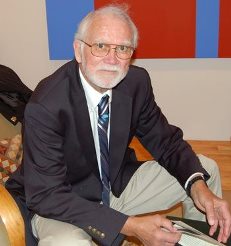
What is one piece of advice you would give to someone before their first assignment as an Incident Commander?
Delegate authority to your primary staff and hold them accountable – and pay attention to the details – especially the basics.
If someone is planning a prescribed fire, what is one thing that you hope they will pay particular attention to?
Obviously it is important to establish good parameters and conform to them, but most of our prescribed fires do not escape during ignition. Most escape after the primary burning phase has ended. Advice – pay attention to the weather and get out there before the wind starts blowing.
One of the more common errors in judgment you have seen on fires?
Pounding a rolling fire with aerial retardant drops.
One thing that you know now that you wish you had known early in your career?
Really – I wish “I didn’t know now what I didn’t know then” – that we would ignore the basics like fighting fire at night, going direct, hanging in tight to the fire edge.
The stupidest mistake you have seen on a fire?
Keeping ground forces in camp due to light rain, but continuing to drop water and retardant from helicopters plus what I said earlier about using aerial retardant on a fast, moving fire – especially one advancing uphill.
Your most memorable fire?
Lots, but probably the Marblecone (1977) on the Los Padres National Forest and the Panorama (1980) on the San Bernardino National Forest as a Fire Boss and IC, but also the Bear Fire (1970) on my district (Big Bear) also on the San Bernardino while the district ranger.
The first very large fire you were on?
Alaska, 1956
—Your favorite book about fire or firefighting?
Burning an Empire
—The first job you had within the fire service?
Fire Control Aide for the BLM in Alaska
—What gadgets, electronic or otherwise, can’t you live without?
I prefer to have my laptop and cell phone, but I think I could live without them.
Incident Commander of the Yarnell Hill Fire reflects on the 19 fatalities
The person who was in charge of the Yarnell Hill Fire the day 19 members of the Granite Mountain Hotshots were killed was interviewed by The Republic recently. Incident Commander Roy Hall, submitting to his first detailed interview since the June 30 tragedy near Yarnell, Arizona, said there was “no smoking gun here”, referring to the report commissioned by the state of Arizona.
The article and a video of Mr. Hall can be seen HERE, but be advised the video will play automatically.
Mr. Hall arrived on the fire the morning of June 30. Usually an incoming team will observe and shadow the existing command structure for 12 to 36 hours before they take over a fire, but a few hours later at 10:22 a.m. an announcement was made over the radio that their team was assuming command. About six hours after that 19 members of the Granite Mountain Hotshots were dead.
In the interview and in a written statement, Mr. Hall provided some background information about the fire and his feelings about the deaths.
Below is an excerpt from his statement, which has many capitalized words and exclamation points:
…we must realize and personally ACT NOW to STOP the speculation, questions, and cynicism of Monday morning quarterbacking! It will NOT bring back 19 of our best and finest comrades!
[…]
The risk and exposure of the wildland fire ground is well documented, however, there will ALWAYS be necessary decision space at the battlefield-fire line level.
The article also includes quotes from two of the Operations Section Chiefs on the fire. One of them, Paul Abel, said he verified with Division Supervisor Eric Marsh that the Granite Mountain crew was safe in a previously burned area, and they discussed the treacherous wind forecast. Mr. Abel said he still doesn’t know why the hotshots moved from the safe, black area and proceeded to a ranch, which had been identified as another safety zone.
****
Another article at the Arizona Republic, in today’s edition, quotes “experts” and authors of books about potential lessons learned in the Yarnell Hill Fire report.
Thanks go out to Chip
Prescott Fire Chief forced out
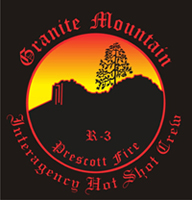 The chief of the Prescott Fire Department is being forced out of his job by the City Manager. Even though this happened three months after 19 members of the department lost their lives on the Yarnell Hill Fire, the reason for Fire Chief Dan Fraijo’s departure is unclear.
The chief of the Prescott Fire Department is being forced out of his job by the City Manager. Even though this happened three months after 19 members of the department lost their lives on the Yarnell Hill Fire, the reason for Fire Chief Dan Fraijo’s departure is unclear.
Prescott City Manager Craig McConnell told the Daily Courier that the Chief is leaving by “mutual agreement” effective November 15, but Chief Fraigo told the Courier and the Arizona Republic that the city asked him to leave.
The 70-year old Chief, formerly with the Phoenix Fire Department, was hired on an interim basis in May, 2012 and was named Fire Chief in February, 2013. His contract specified that either party could end his employment with 30 days’ notice.
The official report of the 19 fire fatalities of the Granite Mountain Hotshots found “no indication of negligence, reckless actions, or violations of policy of protocol” on the part of the firefighters.
Thanks go out to Gary

